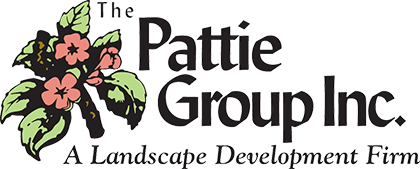Sustainability is based on the principle that everything we need for survival directly or indirectly depends on our natural environment. It calls for humans and nature to exist in productive harmony fulfilling the social, economic and other needs for present and future generations. Sustainability is important to make sure we have and will continue to have, the water, materials, and resources to protect human health and our environment.
At the Pattie Group, we focus on each phase of our clients’ projects to find sustainable solutions. We approach every design as a unique site with its own character, challenges and potential. With a master plan, we optimize the site’s potential, meet the needs of today and plan for tomorrow as life changes for our clients. The best designs also address many of the issues that construction brings as well as future maintenance.
Sustainable construction of a project depends on the five basics of sustainability:
Soil
We work to not disturb the soil or property multiple times and to have minimal impact on the site. Our design teams work with the home construction teams to minimize the movement or removal of healthy soil, which also reduces the energy costs of moving soil. When topsoil must be removed from an area, we save and reuse it later to maintain the natural biology of the property. If necessary, soils are mitigated with composts, tilling and other integrated amendments, or aerated to reduce compaction.
Hydrology
We work to improve water quality and remove pollutants by increasing infiltration naturally and reducing runoff. Plants help to clean and slow the water before it leaves the site and reduce erosion. We have helped our clients with water collection utilizing rain barrels, bladders and cisterns. The collected water is then recycled for irrigation. Our properly designed irrigation systems also help to minimize water usage up front. We try to reduce the use of drain tile when possible to lower material usage as well as the delivery and installation costs. We also work where we can to introduce rain gardens and bio swales as well as permeable pavements, to manage water run off. Our proper use of groundcovers and vegetation helps slow rain fall and reduce erosion. Groundcovers are a more sustainable solution than the annual addition of replaceable mulch. The less water movement around properties also helps to address drainage issues on your property, rather than putting it in a pipe for someone else downstream.
Vegetation
During new construction and addition work, we try to preserve the existing vegetation whenever possible. When we must introduce new ones, we suggest edible and/or plants native to your area which have less pest, disease and adaptability issues. In a commitment to sustainability, we purchase locally grown plant materials within 150 miles of our headquarters to reduce the environmental effects of human transport. When selected plants are appropriate for their new location, they thrive more quickly and fit the area better without additional extreme maintenance efforts.
We also work hard to preserve and protect existing trees on your property. To do so, we mark and fencedrip lines to lower equipment and foot traffic, which can compact and destruct existing soil and roots. Existing trees, as well as strategically-placed planted trees, add shade to homes and reduce energy costs. Not to mention, natural shade falling on patios and in garden spaces improve human comfort, helps maintain moisture levels and keep planting beds from drying out.
Material
From the start, our designs are functional and use space as efficiently as possible in order to minimize waste and materials. The materials we do select are local, permeable, naturally occurring or even recycled, when possible. We choose paving appropriate for the space and try to utilize permeable, dry-laid paving for the best water runoff management. By choosing local materials, we lower transportation costs resulting in a reduced carbon footprint in transport. When selecting construction materials, we look for ones that may be reused or recycled in the future. We also try to reuse on-site materials or use salvaged and recycled materials in new space creation. For example, scrap stone and brick can be upcycled as decorative inlays or, when small, as base material for a future patio.
Human Well Being
Human well being is what we design for first and foremost. Our mission is to create outdoor rooms and spaces for people to experience. A reconnection with the natural outdoors is the ultimate personal connection with sustainability. Getting outside helps to reduce stress, increase activity, and increase your overall quality of life. Have you ever sat near a water fall and felt that stress just wash away? Or simply took the dog for a walk around the house to exercise? For general enjoyment and leisure time, outdoor living spaces also get you into the fresh air and away from poor indoor air quality which is full of chemical and synthetic material vapors.
